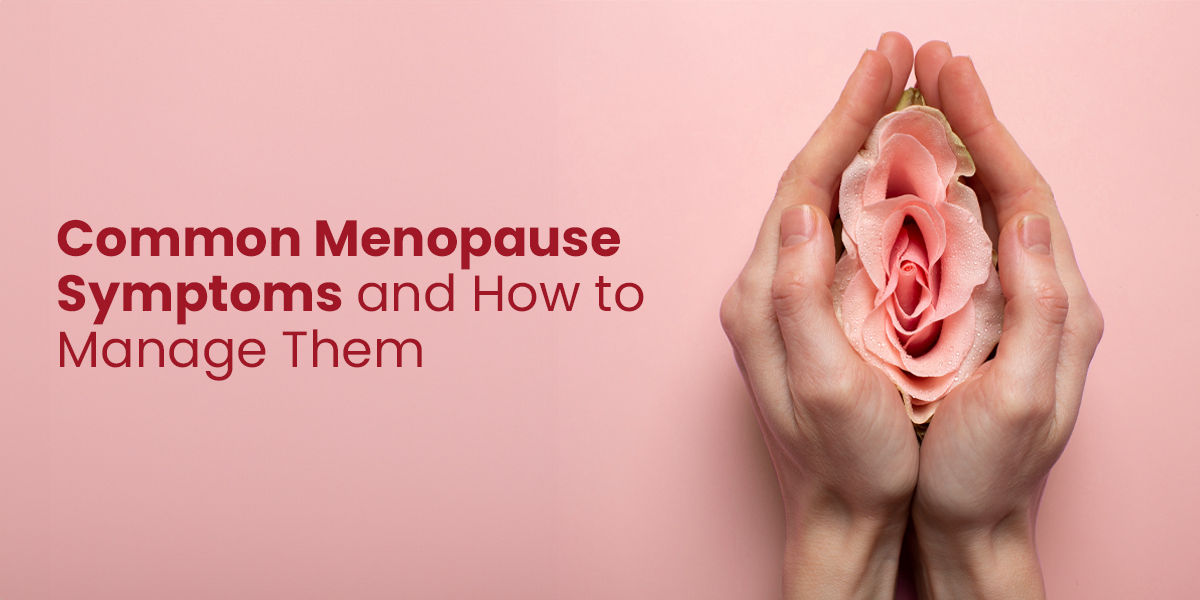Common Menopause Symptoms and How to Manage Them

Menopause is a natural biological stage in a woman’s life that typically occurs between the ages of 45 and 55. It marks the end of menstrual cycles and fertility. While it is a normal part of aging, menopause can bring a range of physical and emotional changes due to declining levels of estrogen and progesterone. Recognizing the symptoms and knowing how to manage them can greatly improve quality of life during this transition.
What is Menopause?
Menopause is defined as the point at which a woman has not had a menstrual period for 12 consecutive months. The time leading up to menopause, called perimenopause, can last several years and is often when symptoms first begin.
Common Menopause Symptoms
1. Hot Flashes and Night Sweats
Hot flashes are sudden feelings of heat, often accompanied by sweating and a flushed face. Night sweats are hot flashes that occur during sleep, sometimes disturbing rest.
Management Tips:
- Wear breathable, layered clothing.
- Keep your bedroom cool at night.
- Limit caffeine, alcohol, and spicy foods, which may trigger hot flashes.
2. Irregular Periods
During perimenopause, menstrual cycles may become shorter, longer, heavier, or lighter before they eventually stop.
Management Tips:
- Track your cycle to notice changes.
- Consult your doctor if bleeding is unusually heavy or prolonged.
3. Mood Swings and Irritability
Hormonal changes can impact brain chemicals, leading to mood swings, irritability, or even anxiety and depression in some women.
Management Tips:
- Practice stress-relief techniques like yoga, meditation, or deep breathing.
- Regular exercise helps improve mood and energy levels.
- Seek support from friends, family, or a counselor if needed.
4. Sleep Disturbances
Night sweats, anxiety, or hormonal shifts may make it harder to fall or stay asleep.
Management Tips:
- Stick to a regular sleep routine.
- Avoid screen time right before bed.
- Limit caffeine intake in the evening.
5. Vaginal Dryness and Discomfort
Lower estrogen levels can cause thinning of vaginal tissues, dryness, and pain during intercourse.
Management Tips:
- Use water-based lubricants or vaginal moisturizers.
- Discuss with your doctor about low-dose vaginal estrogen therapy if symptoms persist.
6. Weight Gain and Slowed Metabolism
Many women notice weight gain during menopause, particularly around the abdomen, due to hormonal changes and aging.
Management Tips:
- Follow a balanced diet rich in whole grains, lean proteins, fruits, and vegetables.
- Stay active with regular strength training and aerobic exercises.
- Monitor portion sizes and limit processed foods.
7. Memory and Concentration Issues
Some women report difficulty focusing or mild forgetfulness, often referred to as “brain fog.”
Management Tips:
- Engage in mentally stimulating activities like puzzles or reading.
- Maintain a consistent sleep schedule.
- Stay physically active, as exercise supports brain health.
When to See a Doctor
While menopause is a natural process, certain symptoms may require medical attention. Seek medical advice if you experience:
- Very heavy or irregular bleeding.
- Severe mood changes or depression.
- Intense hot flashes that affect daily life.
- Painful intercourse that doesn’t improve with over-the-counter options.
Managing Menopause with Medical Support
Doctors may recommend treatment options such as:
- Hormone Replacement Therapy (HRT): Helps balance hormone levels and relieve severe symptoms.
- Non-hormonal medications: Useful for managing hot flashes, mood swings, or sleep problems.
- Lifestyle guidance: Nutrition, exercise, and stress management plans tailored to your needs.
Final Thoughts
Menopause is an important life stage, not a medical problem. By understanding its symptoms and learning effective management strategies, women can continue to live active, fulfilling lives. Open conversations with healthcare providers at a Multi Super Speciality Hospital in Kanpur, combined with healthy lifestyle choices and emotional support, can make the journey through menopause smoother and more positive.
Also Read: Sciatica Pain? Here’s Everything You Need to Know to Find Relief

 Call-an-Ambulance
Call-an-Ambulance



